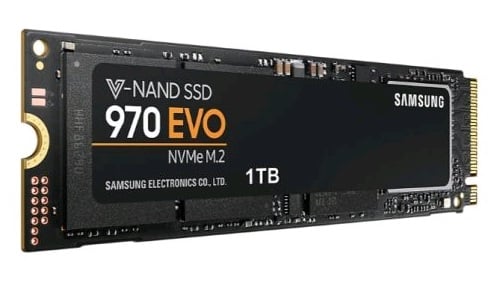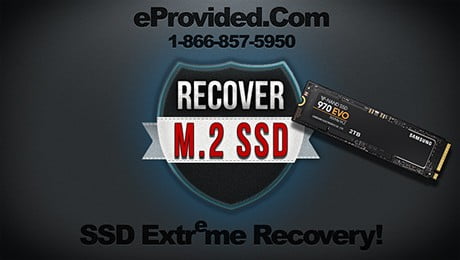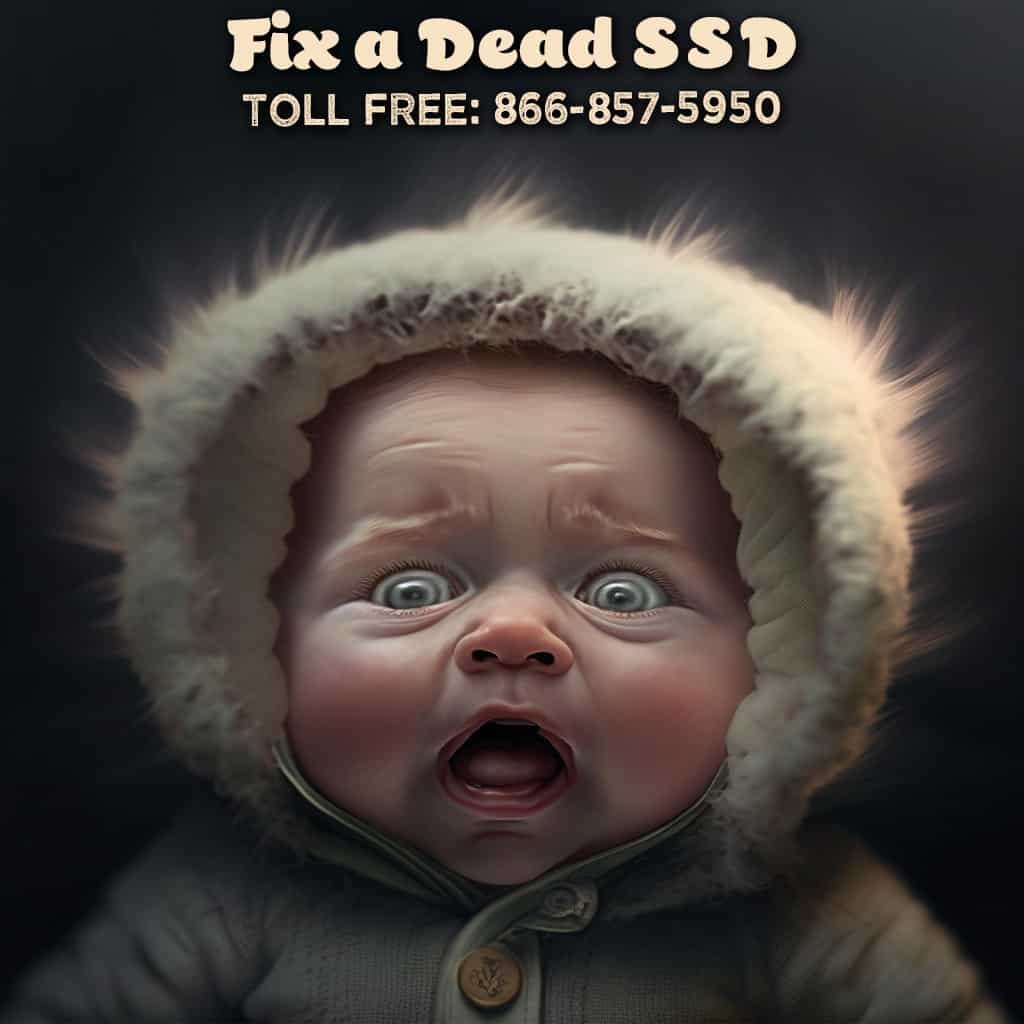Need help recovering data from a dead SSD? Wondering why solid state drives get quirky and disappear when you rely on them? Puzzled by why SSDs sometimes go undetected? Fix your dead SSD drive with eProvided, your dependable file recovery company. Click Let’s Go to begin the process. As our client, you’ll leverage our deep expertise. Count on eProvided, with over 20 years mastering dead solid state drives. Even dead SSDs have hope. Rely on eProvided’s established record of victories.
With vast amounts of solid state drives on the market, determining the best SSD depends on your needs and requirements. Are you getting the most out of your SSD drive? If your SSD fails, it can be a frustrating experience, especially if you’ve invested in storage capacity that you don’t fully utilize. Don’t lose valuable data – ensure your SSD is working hard for you.
Picture the gut-punch of losing all your files, work projects, and photoshoots in an instant. NVMe SSDs, though lightning-fast, aren’t immune to disasters. Safeguard your NVMe SSD against data loss. Ultimately, we effortlessly recover dead NVMe drives, but what if you’re the one hit? SSD users often face sudden, gut-wrenching setbacks. Top culprits behind SSD failure include power spikes, bad blocks, file system glitches, and S.M.A.R.T. (self-monitoring, analysis, and reporting technology) breakdowns.
Ensure fans keep your SSD cool. Ultimately, countless SSD users face issues from defective cooling fans. We snagged Intel NUC PCs for office admin tasks, only to have their SSDs tank because the fans gave out in mere months. Better keep those fans spinning to save your drive from an early grave! How to recover dead Intel SSD that isn’t recognized? It is important to address these issues promptly to prevent further data loss and drive failure. But if disaster strikes, remember, data recovery is possible! Trust eProvided’s track record for fixing dead SSDs. We recover data from SSDs: Intel, Samsung, Crucial and all other manufacturers. A recent testimonial “The staff at eProvided Data Recovery are professional, thorough, and caring. When speaking to me, they have been transparent about cost estimates, and are always open to answering my questions.” Author: Alyssa C., from Las Vegas, Nevada.
NVMe Data Recovery.
Avoid jeopard of the heartbreak of losing critical files by steering clear of outdated SSD tech. Recover dead SSD needs pop up when you opt for obsolete SSD models. NVMe data recovery experts dive in to salvage any broken circuits. Modern SSDs boast superior circuitry and tech. Cutting-edge NVMe or M.2 SSDs rely on fewer NAND chips for better performance.
So, how do NVMe SSDs and M.2 solid-state drives become corrupted? NAND chips communicate with a controller chip. Thus, new high-tech SSD controller chips and NAND technology communicate faster. The success rate of NVME data recovery has increased thanks to new technology. eProvided has managed solid state drive recoveries for 22+ years. If you need data recovered from your solid state drive, call us right away. NVMe data recovery is a challenging yet rewarding task for data recovery professionals.
Solid State Hard Drive Recovery.
An internal hard disk drive is housed in the drive bay and is connected to the motherboard through an ATA, SCSI, or SATA cable. These drives are powered through a connection to the computer’s PSU. The central processing unit, or CPU, is responsible for carrying out all operations. As a result, everything resides on the hard drive. If your external SSD hard drive fails, contact us at eProvided, the dead SSD hard drive recovery professionals.
The hard drive’s random access memory, acts as its short-term memory and stores everything that runs on your PC. This RAM powers the SSD. However, it’s important to note that RAM is considered a “volatile” technology. So, it doesn’t retain information permanently. The RAM and SSD work in sync. The RAM provides temporary storage for data actively used by the CPU, while the SSD provides non-volatile storage for files and applications. It’s worth noting that the SSD stores your data permanently and is separate from the RAM. After powering off your PC, the RAM forgets everything.
An average consumer hard drive lasts roughly 5 to 7 years, or around 20,000 hours of use. These drives are fragile, vulnerable to jolts and tumbles. If your computer takes a spill during data writing, the hard drive likely suffers physical harm. When these drives fail, the damage is glaringly obvious. They gradually slow down and can make ticking sounds. Corrupted firmware modules cause a hard drive to click, knows as the “click of death”. Thus, it’s not always mechanical issues. Sometimes recovery can be easier, yet it remains complicated. SSDs have a different lifespan expectancy compared to mechanical hard drives. SSDs typically last 10 years, but this can vary depending on factors like type, usage, heat and environment.
eProvided has serviced failed hard drives for over 20 years. Fix dead SSD problems with the right team. We don’t just use “cutting-edge tools”. eProvided utilizes special techniques and proprietary systems specifically designed for solid state hard drive recovery or NVMe data recovery. If you encounter a common SSD failure sign or error message like “operating system not found,” it’s crucial to seek help from data recovery professionals to retrieve all of your corrupted data. Reach out to eProvided to recover all lost data.
How to Recover Data from Dead SSD?
Recover data from dead SSD drives after a major malfunction. Time-sensitive data is what matters most. Consumers use Solid State Drives due to their increased speed in reading and writing data. Thus, protect your important data before disaster strikes. Also, keep partitions in check. Formatting SSD partition areas is useful when the current data isn’t critical. Prevent an unnecessary loss of SSD data by maintaining a healthy data tree structure.
 Recover dead SSD data or photos from damaged SSD disks. Dead SSD recovery experts investigate which files might have become lost or damaged. Hence, before you restore files from your dead SSD understand the structure you had. Files are still present on your dead SSD even after being deleted from the recycle bin. SSDs TRIM feature makes recovering deleted files much more difficult than on HDDs. With TRIM enabled, deleting files means deleting the index.
Recover dead SSD data or photos from damaged SSD disks. Dead SSD recovery experts investigate which files might have become lost or damaged. Hence, before you restore files from your dead SSD understand the structure you had. Files are still present on your dead SSD even after being deleted from the recycle bin. SSDs TRIM feature makes recovering deleted files much more difficult than on HDDs. With TRIM enabled, deleting files means deleting the index.
Data recovery is indispensable. In short, hiring our SSD data recovery experts to recover dead SSD files is important. Recover data from dead SSD disks only with our professional SSD recovery company. Solid state drive data recovery software can restore deleted files from a dead SSD. In most cases, though, data loss becomes worse. Then, there’s not much a professional data recovery company can do to recover lost data. Thus, it’s best to recover data from dead solid state drives and avoid risky software. Our NVMe data recovery services are a reliable option for recovering data from dead solid state drives of any type. And, yes, M.2 & PCIe are form factors we work with.
Dead SSD Recovery Solutions.
Discover cutting-edge SSD technology! eProvided dead SSD data recovery experts revolutionize techniques for solid state drive recovery. We pave the way for efficient solutions compared to traditional HDD recovery. Over decades,’ data recovery systems have perfected recovery from older mechanical drives. Although these techniques do not work with SSDs. When a solid-state drive (SSD) is exposed to water damage, it is crucial to prioritize the immediate transfer of data onto another drive. Water damage poses a risk to the functionality of an SSD. And this makes it prone to failure as a result of its underwater exposure.
Contact our skilled dead SSD recovery experts at eProvided anytime you need assistance. Steer clear of risky recovery software that could harm your files further. Choose our SSD recovery through our SSD data recovery service for reliable, secure results. Our technicians expertly restore lost data from a wide range of storage device brands and types.
Recover dead SSD data from any solid state drive with experienced data recovery experts. SSD data recovery experts at eProvided handle tablets, smartphones, flash drives, etc. In the scenario where files become deleted, take your drive to a professional immediately. File corruption will worsen the longer you wait. Using the wrong methods can further compromise your data. Trust the professionals at eProvided for: Immediate action: We prioritize transferring data off your SSD to minimize further damage. Act fast, minimize loss: the longer you wait, the higher the chance you’ll need dead SSD recovery services. Contact eProvided immediately for a free consultation and assessment of your broken SSD.
SSD Bad Blocks.
Even if you maintain your media, a solid state drive can suffer from physical problems. Also, memory wear causes your hard drive to shut down. Not only can your SSD fail due to physical damage, but overwritten files also contribute to a dead SSD. Poor performance is sometimes caused by bad sectors on a hard drive. Overheating PC? Difficulties reading data? This is because of bad sectors. Corrupted sectors make it impossible to access files if an error occurs.
While it’s true that flash drives, SD cards, and M2 drives all have NAND flash memory, they’re still prone to failure. Like hard drives, solid state drives will, too, eventually fail. The thing is, bad sectors on a solid state drive aren’t only driven because of the warranty or P/E cycles. Even SSDs with high original health can develop bad sectors with very light usage. However, eProvided has successfully recovered data from such SSDs with bad sectors.
Make sure you have the best chance at a successful recovery. And, make sure to monitor the health of your SSD. First, check the S.M.A.R.T. (self-monitoring, analysis, and reporting technology) status. This feature monitors different commands in order to detect failures. If your files go missing, early detection gives you a better chance at recovering them. Always backup important files and monitor the health of your solid state drive. If the damage has already been done, use our professional SSD data recovery experts. Our certified engineers will work around the clock to restore NAND flash memory.
Solid-State Drive Not Detected?
Is your solid state drive not detected? Can’t view files stored on your laptop? There may be an issue with your SSD. SSDs have a limited lifespan and are affected by several factors. The age of the drive, the total number of terabytes written over time (TWB), and writes per day (DWPD) are three factors that impact SSD lifespan. Suspect that your SSD is failing? It is best to seek the assistance of our professional SSD data recovery service to prevent further damage to your data.
When a manufacturer states an SSD’s TBW is 150 terabytes, it indicates the drive can handle only 150 TB of written data before wearing out. You’ll likely need a replacement soon after. If you’re frequently writing data, don’t keep all your files in one spot—diversify to stay safe!
Always make an effort to store files on an external hard drive. A USB flash drive is another great solution. You don’t want your hard work to go missing because your laptop is failing or something worse. For example, dropping your laptop on the way to class. SSD drives not detected by Windows or Mac can signify many problems. The fuses on the SSD controller board may have blown or been short-circuited. Also, your NAND chips might have become dislodged or separated from the board.
How to fix a dead SSD?

Samsung SSD 970 EVO NVMe M.2
An SSD surpassing its TBW rating or outliving its warranty faces inevitable failure. The DWPD metric ties write frequency to the warranty duration, aligning their endpoints precisely. Curious about what SSD failure entails? Signs of SSD failure include sluggish file-saving times on your computer. Are you constantly rebooting your machine to keep it running?
Coupled with computers crashing during boot or read-only errors, SSDs are quite amazing. A bit of humor goes a long way. So when you ask how to fix a dead solid state drive, take it in stride. Indeed, it’s complicated.
How to fix a dead SSD that’s not detected? Solid state disks are not detected for various reasons. They can fail due to the methods used to write data. Once you’ve filled the available capacity, the SSD can only add new information by erasing older files. This process is called a program/erase cycle, or P/E cycle for short. Keep in mind that each SSD has a limited number of P/E cycles, and each P/E cycle degrades the memory of an SSD’s cells until they eventually become worn down. You will need to eventually replace the damaged solid state drive.
How to fix a dead SSD? It’s the burning question everyone’s asking. Sure, you might fiddle with it and strike gold occasionally, but let’s keep it real. SSD failures often spark from power loss mid-write cycle. Power surges or shorted connections can also zap your SSD or M.2 drive during use. Always ensure a rock-solid connection while your drive’s running.
SSDs degrade over time. So how does wear leveling come into play? Wear leveling is a process that increases the lifetime of the SSD memory surface. In short, it distributes write cycles across the blocks on the SSD, so they wear consistently. Wear leveling comes into play when you want to know how to fix a dead solid state drive. In short, without wear leveling, any SSD will fail sooner than a user would like. Surprisingly, it benefits endurance in the long run.
Recover Data from SSD Failures & SDS Malfunctions.
Has your SSD crashed, leaving you with a lost or damaged SSD drive? Don’t panic! eProvided is here to help you recover data from SSD. With our advanced recovery techniques and cutting-edge technology, we can retrieve lost files and restore them to their original state. Our data recovery specialists have over 20 years of experience dealing with failed SSDs or malfunctioning SSDs. So, if you need to recover data from SSD, contact eProvided today. Take the first step towards recovering your data by locating the orange “Start Your Recovery” button at the top right of the page.
How to fix a dead SSD. What is Wear Leveling?
Check this out below. Understanding how to fix a dead SSD and a wear-leveling benefits list.
- Wear-leveling is a critical process.
- Wear-leveling ensures uniform wear across every NAND flash cell in an SSD.
- It involves relocating (rewriting and erasing) files across the SSD drive.
- Ultimately, it boosts Solid State Drive longevity for the long term.
Revive Dead SSD Drives Properly.
SSD is a new technology, and some issues are resolving themselves. When SSDs first hit the shelves, they had too many parts and circuits on the boards. For now, SSD manufacturers are streamlining the way each part works with one another. This is very good news. Retrieving files from damaged SSD media is definitely getting easier. Some data recovery jobs are straight-forward; some are not. After all, most don’t want the responsibility of reviving dead SSD disks.
Why choose an External SSD Hard Drive?
In short, PC enthusiasts utilize external SSD hard drives, commonly referred to as portable SSDs, as a means to back up their work. These portable SSDs offer the advantages of high-speed data transfer, compact size, and reliable storage for preserving important files. Owning one is a way to expand existing storage with little cost. Videographers, gamers, and business owners can easily transfer data to portable SSD drives.
For gamers, top-notch graphics and blazing processor speeds are vital for immersive experiences. Various SSD specs shape which external SSD hard drives make the cut. PC gamers demand elite, high-performance drives to keep up. But even external hard drives fail. Solid state drive costs are dropping fast. And, it’s amazing watching 200% increases or more when your PC boots. Many PCs take 30 to 50 seconds to boot. Buy a new SSD, like a Samsung NVMe 990 Pro. You’ll increase your PC boot speed to 10 seconds.
When picking a portable SSD drive, prioritize your storage demands and data transfer speeds to match your projects. Opt for a swift SSD to dodge slow external hard drive woes and keep your workflow smooth. Moreover, certain situations may call for specific interfaces to boost your efficiency and wrap up tasks in a flash.
Videographers who work with 4K, 5K, or 6K video will need a greater amount of media storage. In comparison, photographers starting new journeys won’t need as much. USB 3.0 or USB 3.1 Type-A or Type-C are a few types of interfaces, along with FireWire and Thunderbolt™. One day, your external drive will fail, and you won’t be able to predict it. If you notice your drive becoming slower and acting funny, you might be able to save your data before it fails.
eProvided Solid State Drive Recovery Professionals.
eProvided’s data recovery professionals have extensive experience in servicing external drives in critical condition. Do you have an unrecognized SSD drive or physical damage to an external drive? eProvided consistently recovers all lost data. When faced with dead SSD problems, it’s crucial to rely on seasoned file retrieval professionals. Rely on eProvided data recovery to address issues and fix dead SSD problems! Call 866.857.5950 today for fast service.
If your SSD drive goes undetected or you’ve faced virus attacks or other issues, reclaim your data swiftly. Corruption, overheating, or severe damage are common. Wondering how to fix a dead SSD? Trust eProvided, we are a seasoned data retrieval company, with over 24 years of expertise, to recover data from even the most battered solid state drives.
eProvided data recovery services can successfully recover data from all types of storage devices. This includes SSDs (M.2, PCIe, and NVMe), external hard drives, traditional hard drives, and hybrid drives. Our data recovery services can assist you in retrieving your data and restoring access to your corrupted SSD drive.
Recover your unrecognized SSD drive today. If you notice file corruption or physical SSD damage, it’s crucial to contact our professional data recovery company’s technicians. We have the expertise to recover missing documents and files, ensuring your corrupted SSD drive data is saved. Call toll-free: 866-857-5950.



